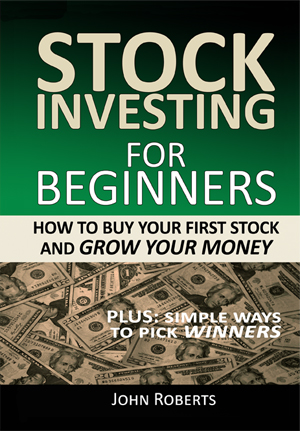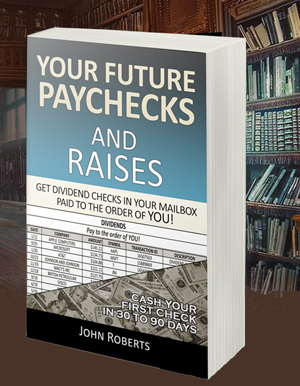Know When To Sell With Dividend Stocks
One of the most important ways we minimize our investment risk occurs when our stock price is going down. Because at some point, if the stock keeps going down, we will want to “stop” our losses. This activity is actually called using “stop losses,” so that’s a new term for you here.
In order to set a stop loss, we actually decide up front, when we buy a stock, how much we are willing to lose before we throw in the towel and sell it.
Making this decision up front is the best time to do this. That’s because you have no money on the table yet, so you are more objective. Let me say that another way. When you have bought a stock, i.e. you have money on the table, it’s emotional. So the idea here is to get the emotions out of the process before buying the stock.
So we decide, up front, how much loss, what percent drop from our buying price, we will allow before we decide it’s time to get rid of the stock.
And a good stop loss percent to use is 25%. This means if you invested $1000 in a dividend paying stock, and it went down by $250, so it’s only worth $750, you sell it and take the $250 loss.
Why 25% you ask? Well, some credible research and back testing against the stock market has shown that stop losses in the 21% – 27% range have yielded the most efficient results as far as protecting investments.
Setting the stop losses too small, say 10%, caused people to sell their investments too early and too often, only to see them turn around and go higher. And larger stop losses, say 40% to 50%, allowed too much of a loss before bailing out of a stock in a downward trend.
Sounds simple enough, right? But let me caution you about that. Because this is one of those things that is “simple, but it ain’t easy.”
Here’s why. Because when one of your stocks starts losing money, you will want to hang on to that stock. Back to your $1000 investment, when it goes down to $750, you will think, well, maybe it will come back up to $1000, and I won’t lose any money. Every molecule in your body will be screaming to hang on to that stock, and not take the 25% loss – because you just know it will come back up.
Don’t do this. Don’t hang on to that stock. Because here’s what can happen.
The stock may continue to go down. So now you’re down by 35%. But hey, you still have hope, so you hang on. Then it’s down by 50% — now you’ve just got to hang on because you’ve lost half your money and you want to recover it.
Then it’s down 75%, and you are so depressed you don’t know what to do. But it keeps going down. Now you’re down 90%, so you think, well, I might as well keep it, because I’ve lost most of my money anyway.
And sadly, you are correct. You have lost the money.
Or, as the legendary investor Warren Buffett says, there are two great rules for investing. They are …
Rule 1: Don’t lose the money.
Rule 2: See Rule Number 1.
You broke rule number 1, “Don’t lose the money.” And rule number 2 also, come to think of it. Looking back on it, you really, really, really wish you had sold that stock when it was only down 25%, right? That 25% loss doesn’t look so bad now.
So don’t let this happen to you. Be smart, and if your stock goes down 25%, get out while you still have 75% left. Because that will leave you with most of your money to invest in another stock, one that may go up and make you money.
So you will live to invest another day. But if you ride it all the way down to a 90% loss, you are dead in the water. You will have to start all over again.
So those are the basics of stop losses for dividend stocks. Sell your stock if it goes down 25% from you purchase price. By the way, this is also known as a hard stop loss.
A hard stop loss differs from the stop loss technique we describe for speculative stocks where you are looking to profit from stock price growth. In that case we suggest using a technique called a trailing stop loss. More on that later.
To your health and prosperity – John
P.S. If you need to learn stock investing basics first, you might like my latest book Stock Investing For Beginners. It’s a fast, easy read, and we show you how to place your order so you can buy your first stock. You can browse through it for free right here.



